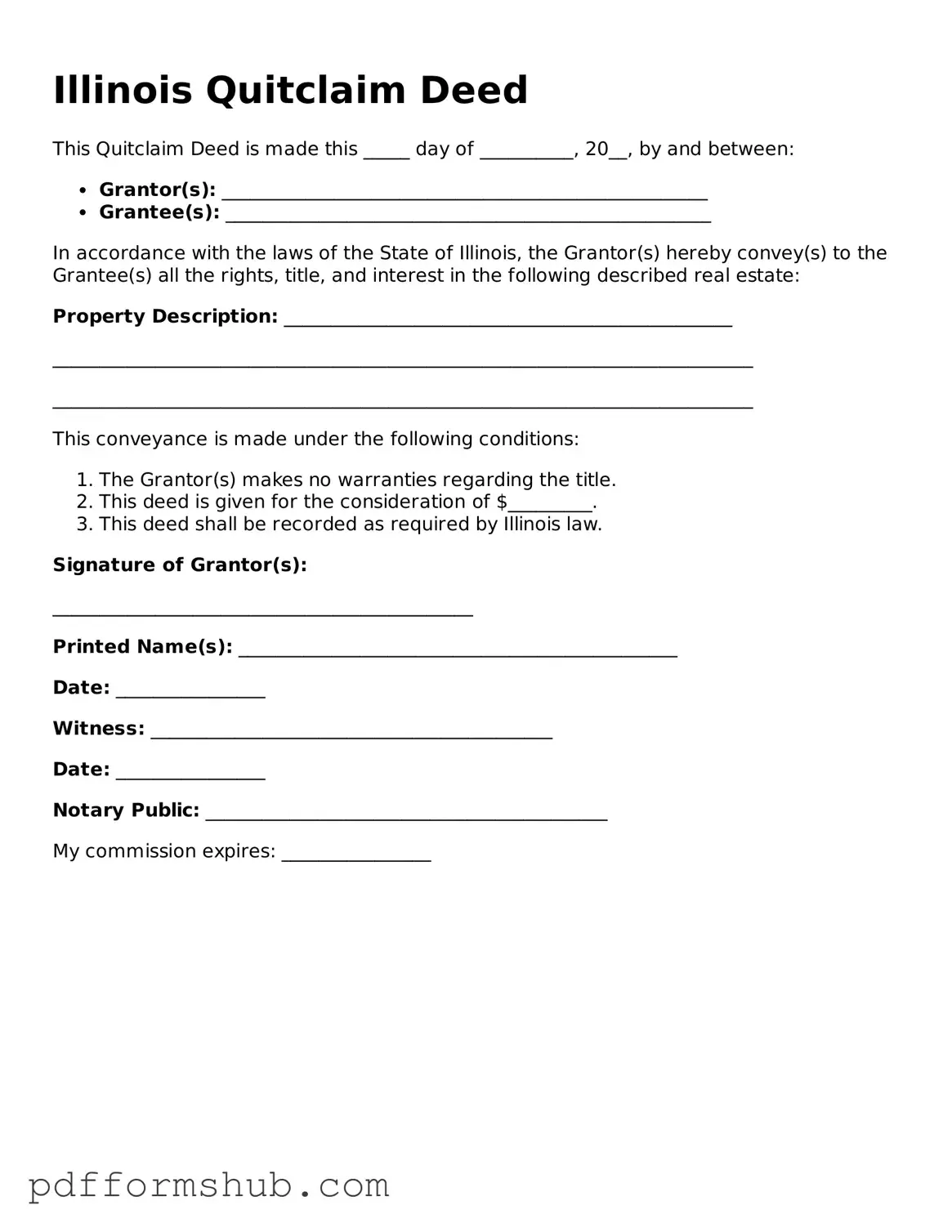In Illinois, the Quitclaim Deed form serves as a vital tool for property owners looking to transfer their interest in real estate swiftly and efficiently. This form allows individuals to convey their ownership rights without providing any warranties regarding the title's validity. This means that the grantor— the person transferring the property— does not guarantee that they own the property free and clear of any liens or encumbrances. Instead, the form simply transfers whatever interest the grantor has in the property to the grantee, or the recipient of the property. It is often used in situations such as transferring property between family members, settling estates, or during divorce proceedings. Understanding the implications of using a Quitclaim Deed is crucial, as it can affect the rights of both the grantor and grantee. Additionally, while the process may seem straightforward, proper completion and recording of the deed are essential to ensure that the transfer is legally recognized and to avoid potential disputes in the future. As such, being aware of the specific requirements and procedures involved in utilizing the Illinois Quitclaim Deed form is imperative for anyone considering a property transfer in the state.
